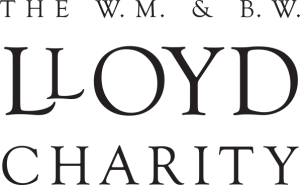A HISTORY OF THE CHARITY
“Billy and Betty”
ABOUT HISTORY OBJECTIVES ASSISTANCE APPLICATIONS THE CHARITY COMMISSION CONTACT
William and Betty Lloyd were brother and sister, neither had married, and they resided in Darwen most of their lives. They had benefitted from investment in the cotton trade. In 1974 they formed the Trust with a small but significant gift and it later benefitted with a substantial legacy from their estates.
Subsequent to the above the Trust has absorbed a number of small local charities that have either reached the end of their natural lives or have such similar objects it was appropriate to merge. These were the Darwen War Memorial Sick Poor Fund, Peter Pan Fund, Darwen Disabled Fund, Hillside Garage Trust, John Frederick Leach Trust, and the Hilda Clarke Memorial Fund. It then took over the administration of the TP Davies Trust and the Darwen Probation Volunteer Fund. Legacies were received from Ernes Aspin, a former Trustee, and Tom and Jean Richards.
OBJECTIVES:
The objectives of the Trust are to apply the income for the advancement of education, the advancement of medical science, and the improvement of public amenities.
The other Trusts that have been taken over covered poverty, helping the disabled and the elderly and these are recognised by the Trustees as being part of the Trusts work.
The Trustees have the power to extend the objectives of the Trust as they see fit but it is a rare occurrence for them to benefit anything that does not help Darwen and its citizens.
AREA OF BENEFIT:
The Trust Deed indicates that the principal area of benefit shall be the old Borough of Darwen as defined at the date of the deed in March 1974 and its satellite villages.
The Trustees are strict in their interpretation of the Deed and whilst they will benefit organisations that benefit the residents of Darwen they seldom donate to anything outside the old borough of Darwen and never to national charities.
ORGANISATION:
The Trust has four Trustees and a Committee of eight local independent advisors drawn from the wider community.
Applications when received are considered by the Trustees and their advisors. They may then ask for further information and perhaps call for an interview or a visit to the project.
Decisions usually take a maximum of four weeks but it can depend on the circumstances.

